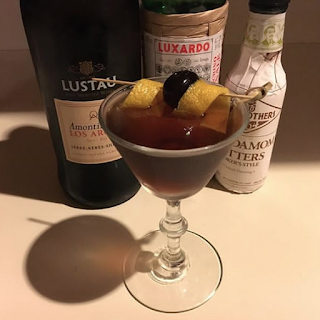1.5 oz Martell Cognac VS
0.5 oz homemade strawberry syrup
1 dash Luxardo maraschino
2 dashes Regan’s orange bitters
Fill mixing-glass with ice, shake, strain into cocktail glass, serve. — This fruity, “improved” strawberry and brandy dessert duo is first found in Straub 1913 and is borrowed for JM1916. The Savoy Cocktail Book (1930) features a large-format (6 serving) drink made with strawberries, orange juice, whisky, and ice. Closer is the Old Waldorf Bar Days (1931) recipe, which only differs by reduction of orange bitters by 1 dash.




















































